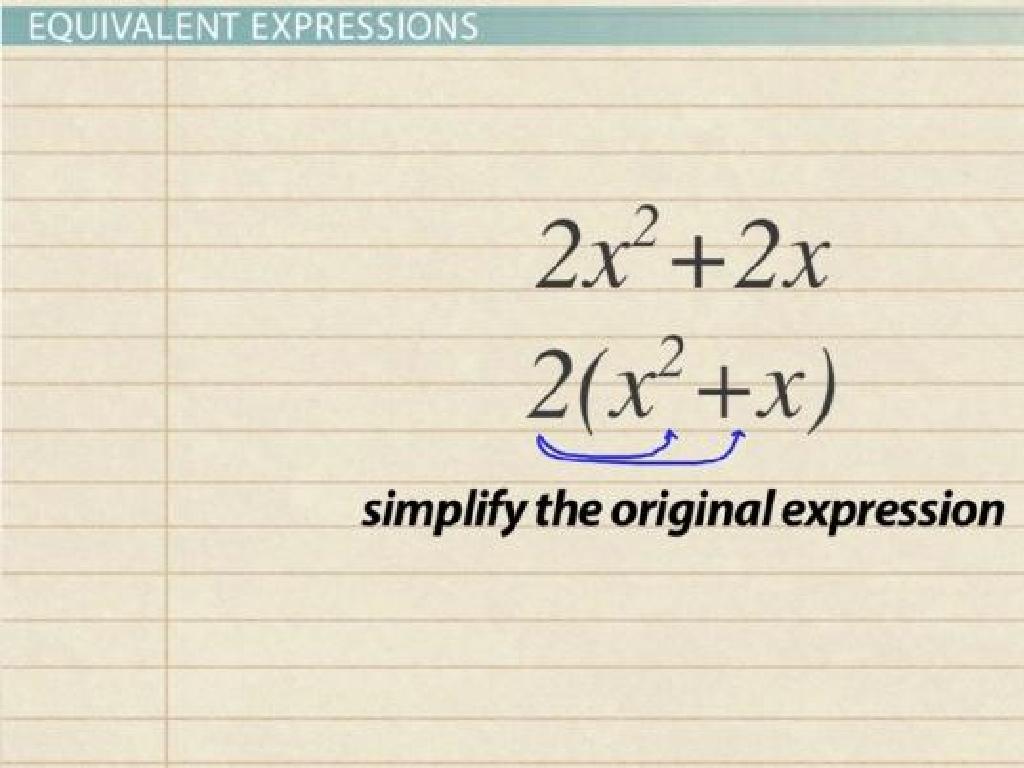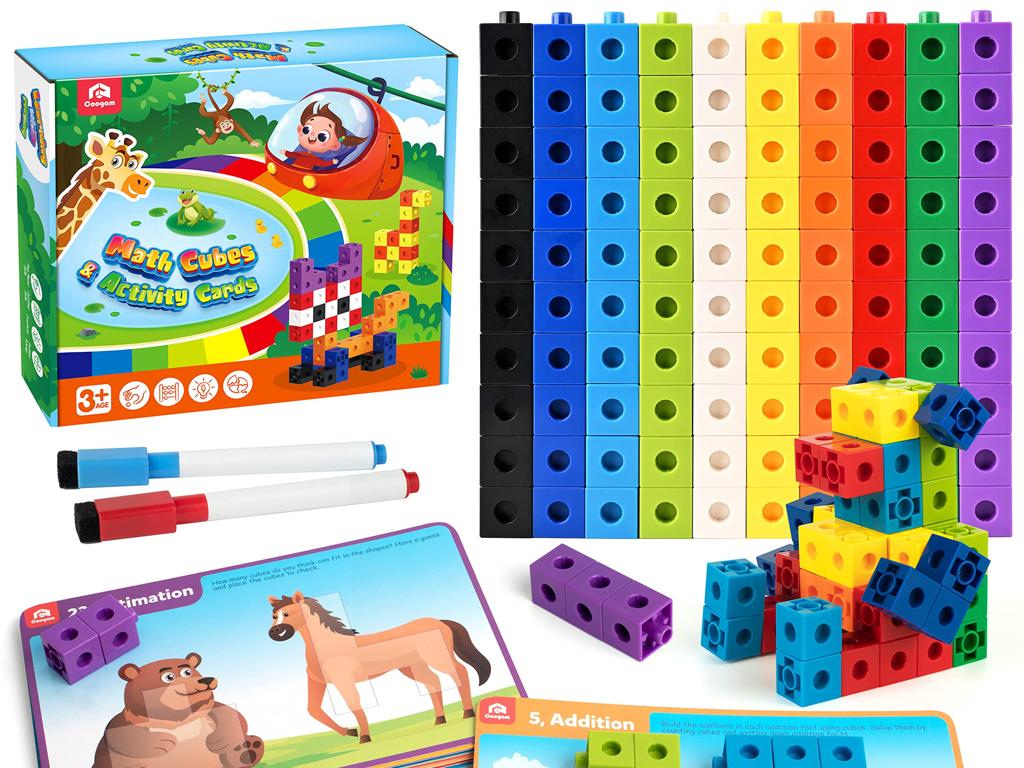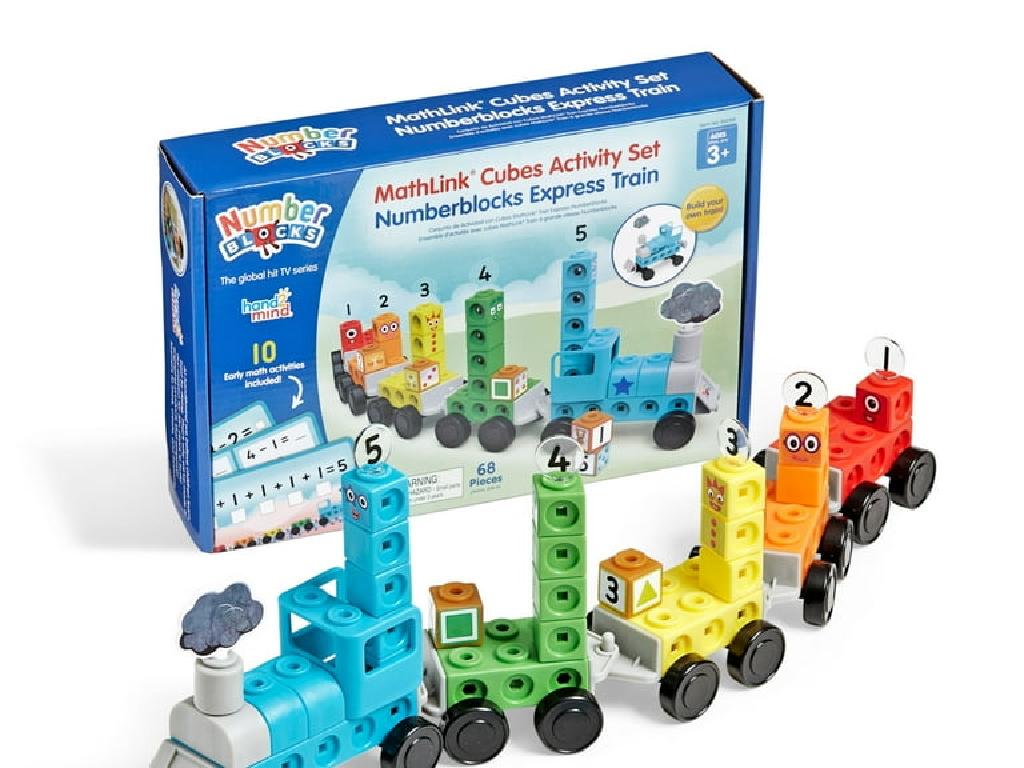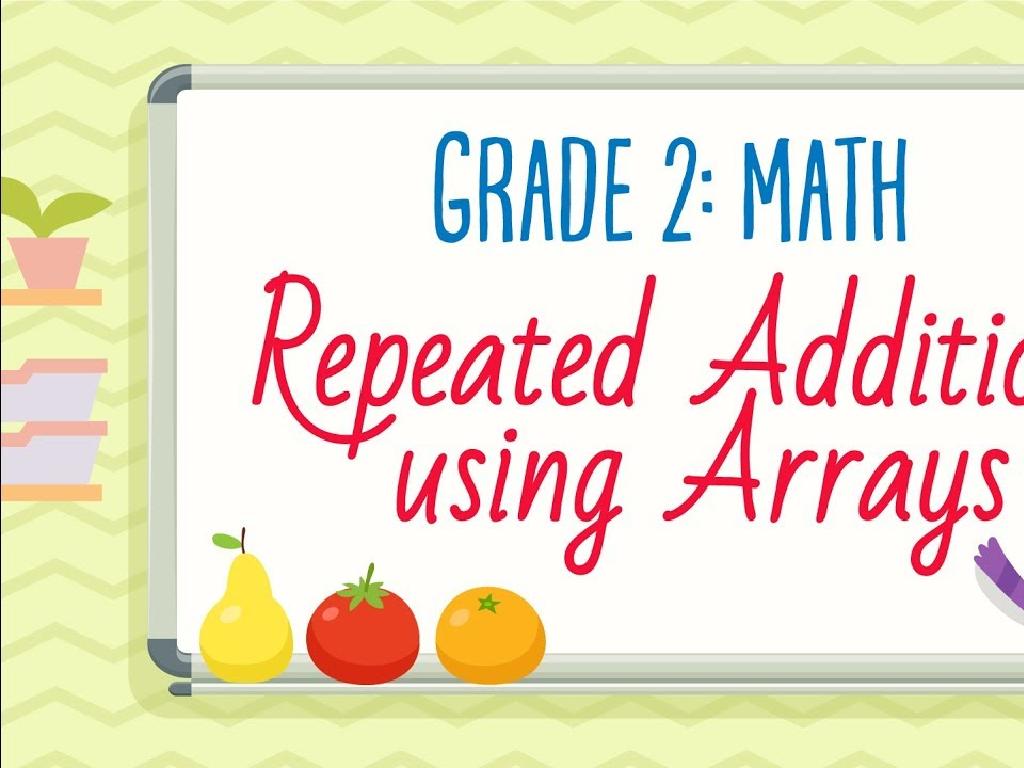Area Between Two Rectangles
Subject: Math
Grade: Fourth grade
Topic: Area
Please LOG IN to download the presentation. Access is available to registered users only.
View More Content
Area Exploration: Between Two Rectangles
– What is area?
– Area is the space within the shape’s boundaries.
– Area in real life
– Area helps plan spaces, like gardens or rooms.
– Calculating area difference
– Subtract smaller rectangle’s area from larger one’s.
– Practice with examples
|
Begin the lesson by explaining the concept of area as the amount of space inside the boundary of a shape. Use simple, relatable examples to show why understanding area is important, such as arranging furniture in a room or planting a garden. Then, introduce the concept of finding the area between two rectangles by calculating the area of each and finding the difference. This can be related to real-life scenarios like finding the space left in a room after placing a rug. Provide students with practice problems where they calculate the area between two rectangles using this method. Encourage them to visualize the problem with drawings and to check their work by comparing the areas.
Recap: Understanding Area
– Area measured in square units
– Rectangle area formula: L x W
– Area = Length times Width, e.g., 5 units x 4 units = 20 square units
– Let’s calculate rectangle area!
– We’ll do an example as a class to understand the formula
– Practice with example rectangles
– Try finding the area of a 3×6 and a 4×8 rectangle
|
This slide is a refresher on the concept of area, tailored for fourth graders. Begin by reminding students that area is the amount of space inside a shape and is measured in square units. Reinforce the formula for the area of a rectangle by explaining that you multiply the length by the width. Work through an example calculation as a class to solidify their understanding. Then, give students a couple of simple rectangle examples to practice on their own or in small groups, ensuring they grasp the concept of area before moving on to more complex topics like finding the area between two rectangles.
Visualizing Area Between Two Rectangles
– Picture frame analogy
– Think of the space between a picture and its frame.
– Area difference concept
– Subtract the smaller rectangle’s area from the larger one’s area.
– Examples of area between
– Look at different frames and pictures to see the space that’s left over.
– Calculating the difference
– Use length times width for both and find the difference.
|
This slide introduces the concept of finding the area between two rectangles by using the analogy of a picture frame, which is a relatable example for fourth graders. Explain that the area between two rectangles is like the space between the picture and the frame. To find this area, we subtract the area of the smaller rectangle (the picture) from the area of the larger rectangle (the frame). Provide examples using actual picture frames or draw diagrams on the board to visually demonstrate the concept. Then, guide students through the process of calculating the area of both rectangles and finding the difference to determine the area between them. Encourage students to ask questions and try calculating with different sizes of rectangles to reinforce the concept.
Calculating Area of Outer Rectangle
– Find area of larger rectangle
– Area is space inside the rectangle’s edges
– Use formula: Length x Width
– Multiply the long side by the short side
– Practice Example: 10 units by 8 units
– 10 units (Length) x 8 units (Width) = 80 square units
|
Begin by explaining the concept of area as the amount of space inside the perimeter of a rectangle. Introduce the formula for calculating the area of a rectangle, which is simply the length of the rectangle multiplied by its width. Provide a practice example using an outer rectangle with a length of 10 units and a width of 8 units. Walk the students through the process of multiplying these dimensions to find the area (10 x 8 = 80 square units). Emphasize that the result is in square units because area is a measure of two-dimensional space. Encourage students to visualize the space being filled with one-unit squares to help them understand the concept of area.
Calculating Area of Inner Rectangle
– Find area of smaller rectangle
– Recall area formula: Length x Width
– Area is the space inside a shape
– Practice Example: 6 units by 4 units
– Use the example to apply the formula
– Calculate: 6 units x 4 units = ?
– Multiplying length by width gives area
|
This slide focuses on teaching students how to calculate the area of a smaller, inner rectangle. Start by reminding them of the formula for the area of a rectangle, which is Length multiplied by Width. Use a practice example with a rectangle of length 6 units and width 4 units to demonstrate how to apply the formula. Encourage the students to calculate the area by multiplying the length by the width. The answer, which is 24 square units, will help them understand the concept of area as the amount of space inside the rectangle. Make sure to emphasize that the units of area are always square units. This will prepare them for understanding how to find the area between two rectangles by subtracting the area of the inner rectangle from the area of the outer rectangle in subsequent lessons.
Calculating the Area Between Two Rectangles
– Find the area of both rectangles
– Multiply length by width for each
– Subtract inner from outer area
– Use subtraction: outer area – inner area
– Discover the area in-between
– The result is the space between rectangles
– Practice with an example together
– Example: Outer 8×10, Inner 3×5, Area between?
|
This slide is aimed at teaching students how to calculate the area between two rectangles by using subtraction. Start by explaining how to find the area of a rectangle (length x width). Then, guide them to calculate the area for both the inner and outer rectangles. Emphasize that subtracting the smaller area (inner rectangle) from the larger area (outer rectangle) gives the area between the two shapes. Use a practice example to illustrate this concept, such as an outer rectangle with dimensions 8 by 10 units and an inner rectangle with dimensions 3 by 5 units. Ask the students to calculate the area of each and then find the difference. This hands-on activity will help solidify their understanding of the concept.
Real-Life Application: Garden Planning
– Understanding area in real life
– Example: Garden with a path
– Imagine planning a garden with a space for walking around it
– Calculate plant area
– Measure the inner rectangle for plants
– Calculate path area
– Measure the outer rectangle and subtract plant area
|
This slide aims to show students how the concept of area is used in real-life situations, such as planning a garden. Start by explaining that area is the size of a surface. Then, use the example of a garden to illustrate how to calculate the area for planting and the separate area for a walking path. Encourage students to think about the shape and size of the garden and the path as two rectangles, one inside the other. They will learn to calculate the area of both rectangles and understand that the area of the path is the difference between the two. This practical application helps students see the value of mathematics in everyday life and engages them in problem-solving.
Class Activity: Create Your Frame!
– Receive a sheet with two rectangles
– Color the area BETWEEN the rectangles
– Think about the space you’re coloring
– Is it inside the big rectangle but outside the small one?
– Share your strategy with the class
– Explain how you figured out what to color
|
In this activity, students will apply their understanding of area by visually distinguishing the space between two rectangles. Provide each student with a sheet that has two rectangles drawn on it, one smaller and inside the other. Their task is to color only the area between the two rectangles, which will help them conceptualize the idea of ‘area between shapes’. After the coloring, facilitate a discussion where students share their thought process. This will help them articulate their understanding and learn from each other’s strategies. For the teacher: Prepare sheets with rectangles of varying sizes to accommodate different difficulty levels. Encourage students to describe the difference between the inner and outer rectangle and how they determined the boundaries of the area to be colored.
Area Exploration: Homework Challenge
– Congrats on learning about areas!
– Homework: Find 3 items with areas
– Look for items like books, boxes, or tables
– Calculate the area between them
– Measure the length and width, then find the area
– Share your findings in class
|
This slide wraps up the lesson on calculating the area between two rectangles and transitions students into a practical homework assignment. Encourage students to find everyday items such as books or boxes and measure their length and width to calculate the area. Remind them to use the formula for the area of a rectangle (length x width) and to subtract the smaller area from the larger one to find the area between. This hands-on activity will help solidify their understanding of the concept. Be prepared to assist students in sharing their findings the next day, fostering a collaborative learning environment.






